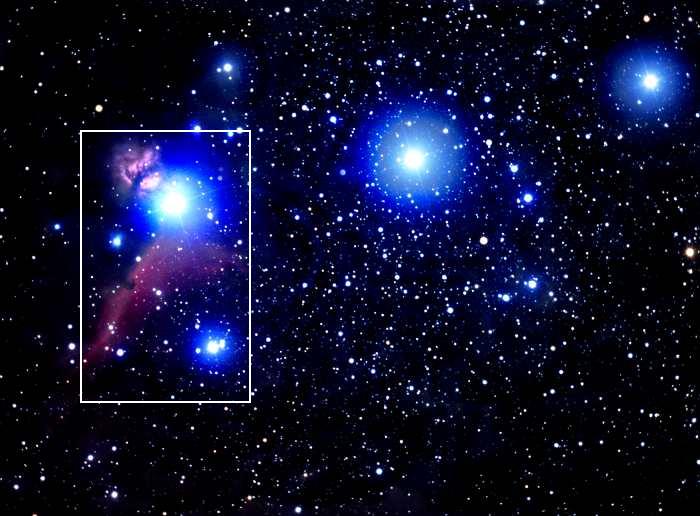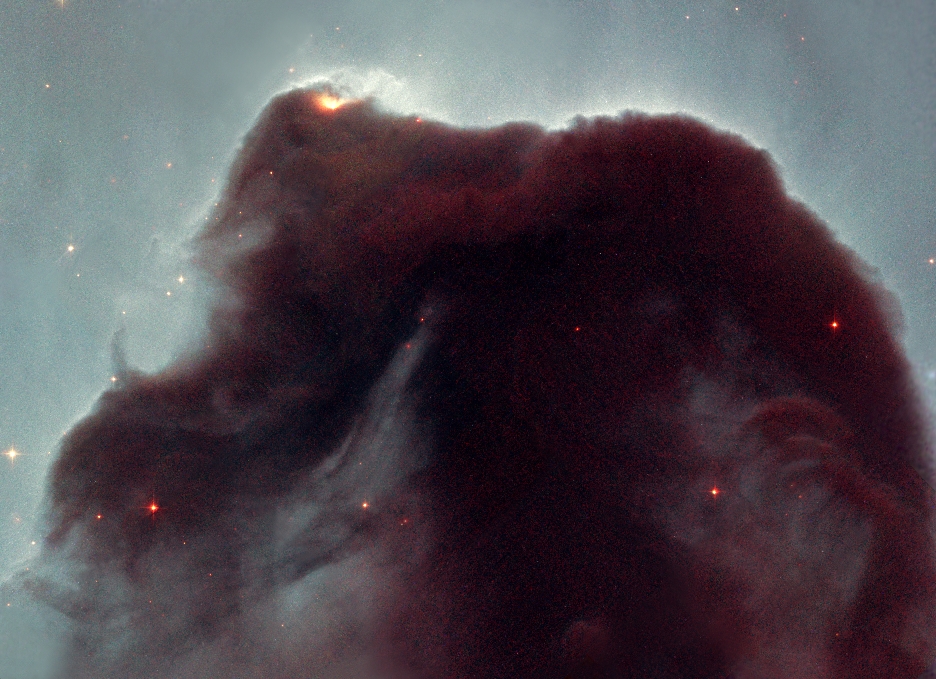Evidence for the Interstellar Medium (Dust and Gas)

|
Fig. 1) The Constellation of OrionThe constellation of Orion, the Mighty Hunter, is possibly the most spectacular constellation in the sky, rich in every type of celestial object. It serves as an excellent site to study to the effects of interstellar dust and gas.Point out parts of this image with as many of the four 'evidences' for interstellar medium as you can. |

|
Fig 2) Orion's BeltThis photo is of the center of Orion, the region known as Orion's Belt because these three bright stars make up what would be the waist belt of the Hunter. Zeta Orionis is easily visible to the unaided eye as the left-hand star in the line of three that forms Orion's Belts. Zeta Orionis is a blue supergiant star.Point out parts of this image with as many of the four 'evidences' for interstellar medium as you can. |

|
Fig 3) The Horsehead Nebula RegionJust about everyone interested in astronomy has heard of the Horsehead Nebula. The nebula lies just south of the Bright star Zeta Orionis. The Horsehead Nebula is just one small part of an extended region which is also showing stars forming.Point out parts of this image with as many of the four 'evidences' for interstellar medium as you can. |

|
Fig 4) Close up image of the Horsehead NebulaIn this image, taken with the Hubble Space Telescope, one can see the true nature of the nebula. It is only by chance that it roughly resembles the head of a hours. Its unusual shape was first discovered on a photographic plate in the late 1800s.Point out parts of this image with as many of the four 'evidences' for interstellar medium as you can. |